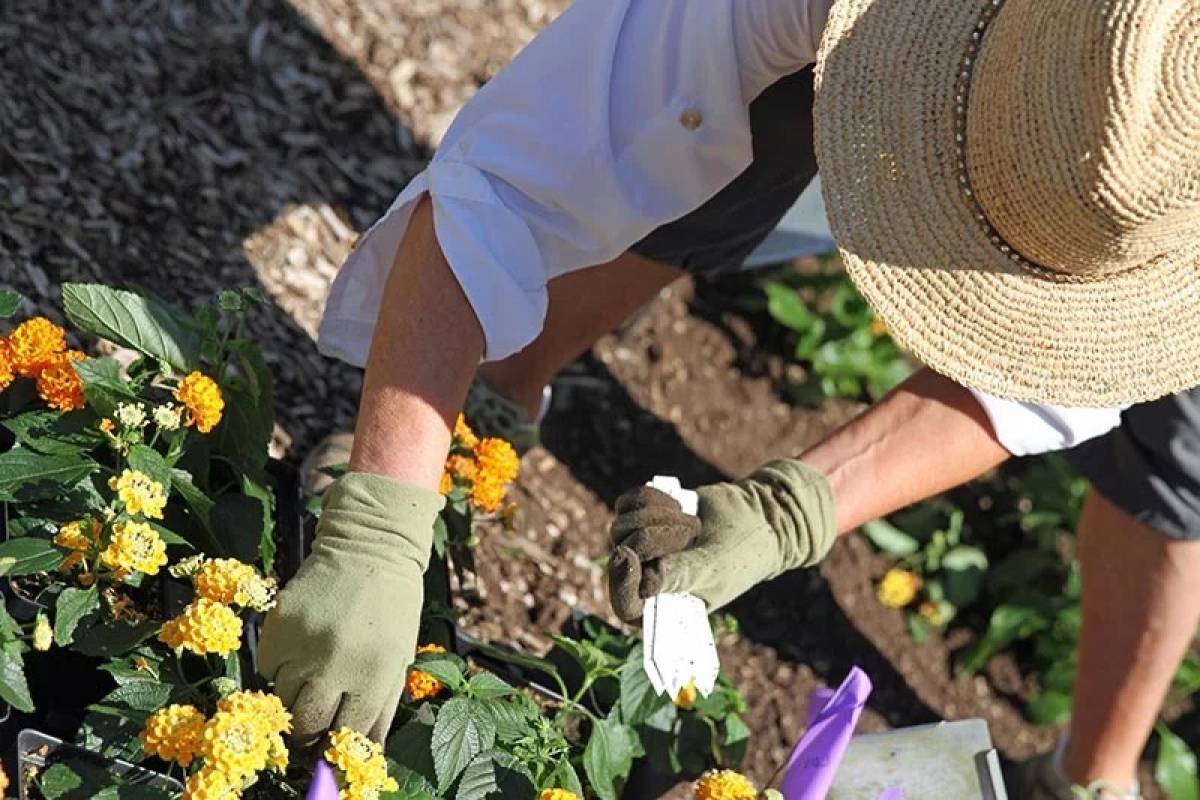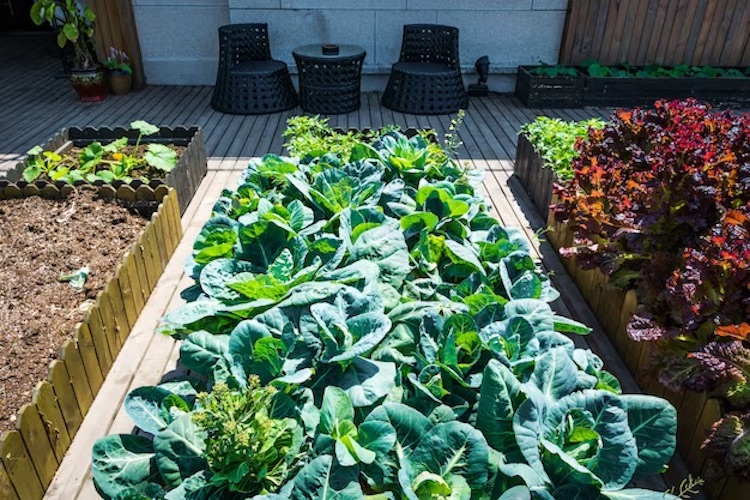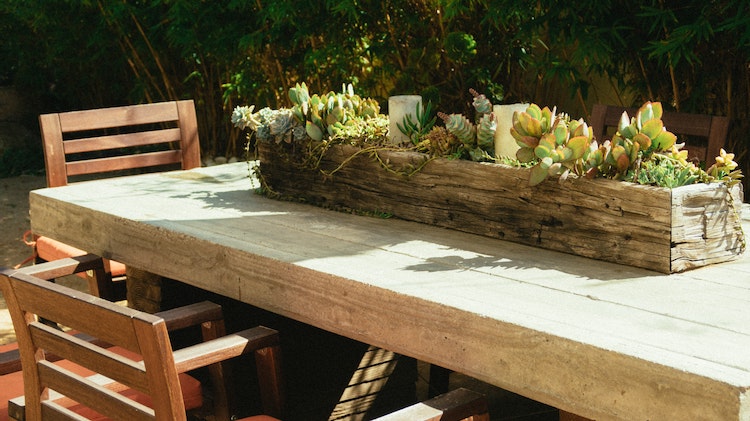Expert Tips to Get Your Garden Spring-Ready & Keep Plants Healthy

As Spring rolls in, March and April are the most popular months to start a gardening project.
And with more people actively gardening (42% in the UK), you may wonder what are the best ways to get your garden ready in time for Spring.
Intrigued to find out, London commercial property agents Savoy Stewart conducted research into how we can revive our gardens in time for Spring, and provide useful tips and tricks for keeping our gardens and plants healthy.
Tips for growing seasonal vegetables this Spring
“With April days getting longer and reliably warmer, now’s the time to start sowing crops,” The Eden Project’s Living Landscapes Manager Julie Kendall, told Savoy Stewart.
“Some harder crops, such as carrots and peas, can be sown directly into the ground outside. Tender crops, like sweetcorn and courgettes, will do better in a greenhouse, shed with windows or sunny windowsill,” Kendall adds.
“You don’t necessarily need to have a dedicated vegetable plot if space is limited. Vegetables, fruit and herbs can be mixed together along garden borders, like a potager garden, and many can also be grown in pots, such as salad leaves and radish.”
1. Bell peppers
Bell peppers are best grown in early March to the middle of April. However, there are some important care tips to be aware of.
Firstly, it is important to use the right fertiliser. In this case, a fertiliser which is low in nitrogen should be used, in order to ensure the rate of growth isn’t harmed.
Companion plants can also be crucial to plants thriving, and bell peppers reportedly thrive well around cucumbers and carrots, but less so around cabbage family plants.
2. Potatoes
Potatoes prefer slightly cooler weather, which is why they are best planted in Spring. It is important to make sure you are planting certified seed potatoes, to avoid starting with any diseases in them.
Ensure you are watering them consistently with about 1 to 2 inches per week, and grow them in acidic and well-drained soil whilst in full sunlight.
Additionally, ensure you are covering the potatoes with soil or mulching heavily so that the skin does not turn green.
3. Carrots
Carrots can take up to 3 weeks to germinate in moist soil and begin as very small seeds which should not be planted too deep.
The best way to plant carrots is to sprinkle the seeds on the surface of the soil, and lightly brush the soil up with your fingers.
Once growing, ensure you thin the sprouts, removing any extra sprouts so that each carrot has 1 to 2 inches of space around it. If this is not done, your carrots may grow smaller.
Top tips to keep your plants healthy

1. Use cinnamon in your garden
Cinnamon may well be a staple in your kitchen, but it also has multiple purposes when it comes to your garden.
Scientific studies have found that it can be used to treat mould on plants. For instance, white mould usually infects plants in the early Spring period, meaning it can develop unnoticed for quite some time.
To use cinnamon to treat plant mould, you should take 1 teaspoon of ground cinnamon, and 5 litres of warm water, and let it sit for a few hours. Your cinnamon fungicide will be ready once this is complete.
Cinnamon also helps protect seedlings against rot, which can also accelerate growth! For seedlings, you don’t need to prepare the solution, just simply sprinkle some ground cinnamon directly onto the seedlings, and let it get to work!
2. Use coffee grounds in your garden
Coffee is a part of many of our daily routines, but it can also become an essential part of your plants’ lives.
Plants such as roses and tomatoes thrive best in acidic soil, and coffee grounds can help to achieve this. You can either sprinkle the used grounds over the surface of the soil, or you can make coffee and pour it onto your soil.
Soak up to six cups of used coffee grounds for up to a week to make garden coffee, then you can use it to give your plants some care.
3. Use eggshells in your garden
Alternatively, if you have plants which prefer less acidic soil, such as lentils, chickpeas, and soybeans, eggshells could be your best option.
Eggshells help lower the acidity of your soil, as well as provide plants with calcium, an essential nutrient.
To use eggshells, simply clean them out in your kitchen, crush them, and they will be ready to use in your garden.
Top garden trends this Spring

I. Gardening for mental health
With 34% of people spending time in the garden for mental health and well-being reasons, the physical benefits of gardening and being outside are clearly things we value.
As a result of this, our garden styles are reflecting a more flower-filled space, to create a relaxing atmosphere amongst nature, rather than a plain minimalist effect.
II. Furniture trends
It is predicted that 2023 will bring garden furniture trends such as pop colors. These colorful items of furniture can be used as accent pieces, to brighten your garden space.
Secondly, lightweight furniture is predicted to be popular, as it gives your garden a breezy, light feel. This type of furniture is particularly suited to smaller spaces such as vegetable gardens or terrace gardens.
Thirdly, a material expected to see increased popularity is teak. This is a particularly good material for withstanding all weathers, whilst being low-maintenance, with no need for painting or vanishing.
Some key tips for reviving your existing garden furniture for the season ahead are:
- Start by removing any cushions on the furniture, and use a brush to get leaves and moss off. It is important that you vacuum any excess that you could not initially get off.
- Mix washing up liquid with warm water, and use a soft cloth to wipe down your furniture, ensuring to get in all crevices. Allow this to soak in for a few minutes.
- Avoid using bleach, to avoid discolouration to your furniture.
- Rinse with a hose on low pressure, using a pressure washer could damage furniture, and allow this to dry thoroughly.
III. Planting color trends
It is predicted that plants with plummy or darker stems such as bronze fennel, will be positioned as a backdrop for lighter-coloured plants, such as meadow flowers.
It is also thought that smokey purple and grey hues in flowers will be highly sought after this Spring.












![7 Inspirational Quotes to Uplift You [INFOGRAPHIC] young-woman-inspired-notes-smile-inspiration-quote](/sites/default/files/styles/video_thumbnail_bottom/public/young-woman-notes-smile-inspiration-quotes.jpeg?itok=DqYtOSE1)







